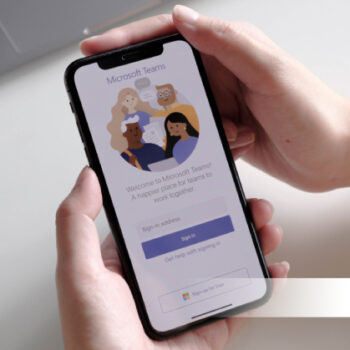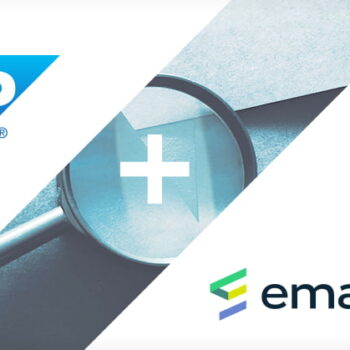SAP enters the low-code and no-code platform market
Justyna Mejna, Content Marketing Specialist
- 24th May 2021
- Trends in SAP
- 3 min

The need to quickly adapt solutions to the current organizations’ requirements and a plan to generate savings and optimize available resources have resulted in a growing interest in environments that allow designing applications without extensive coding skills and years of programming experience. Is the market’s future to be seen in low-code platforms, and what does the low-code/no-code approach actually mean?
SAP acquires AppGyver
At the beginning of the year, we learned about the acquisition of AppGyver Oy, a producer of mobile software development tools and a pioneer on the market of platforms allowing designing applications without proficiency with programming languages. AppGyver will become a part of SAP Business Technology Platform, expanding SAP’s portfolio in the Business Process Intelligence area and complementing the offer of the technology giant with a new codeless service that simplifies the process of creating business applications.
The news of the AppGyver acquisition came as a surprise to partner community, since Mendix Tech BV, part of Siemens AG, is an SAP Solution Extension Partner, which means that SAP has adopted the Mendix Platform as its extension platform for solutions such as SAP Business Suite, SAP S/4HANA, SuccessFactors and many others, using SAP Rapid Application Development by Mendix as a product name.
AppGyver is intended to complement Mendix’s low-code offerings within SAP ecosystem, supporting enterprises in developing custom applications much faster than traditional development approaches permit. In addition, adopting an agile, low-code application development strategy makes it easier to adjust IT systems to meet an organization’s current needs.
| Tool | Application complexity | Development approach |
| SAP Business Application Studio | High | Pro code |
| SAP Cloud Platform Rapid Application Development by Mendix |
Medium | Low code |
| AppGyver | Low | No code |
Low-code vs no-code development
Low-code development platforms (LCDPs), such as Mendix, enable developing web & mobile applications, requiring from users only basic coding skills. On the other hand, no-code development platforms (NCDPs) such as AppGyver, by using a drag-and-drop or point-and-click mechanism from the graphical interface, allow building simple apps that do not require programming knowledge at all. However, in business practice, these two terms are often used synonymously because both low-code and no-code platforms respond to the needs of customers who want to speed up the implementation of a given project and reduce its costs.
It’s worth pointing out that low-code and no-code platforms weren’t created just for non-technical users who wish to build their solutions for internal use, but also to help developers simplify and shorten several stages of software development. IT professionals should, therefore, not see low-code platforms as a market threat but as a new agile work environment that will free them from having to handle repetitive, time-consuming tasks.

Marek Pikosz
Microsoft Dynamics 365 Developer
“By using low-code and no-code platforms, I can develop, test and implement custom solutions rapidly. Such an approach allows me to focus on the customers’ current needs. With Microsoft Power Automate and Appian tools, I’m able to automate business processes, while by using Microsoft Power Apps and AppSheet editors – create an entire application within a few days or a few weeks, depending on the project complexity”.
Are low-code platforms the future of application development?

Andrzej Brodniewicz
Chief Technology Officer
“According to Gartners’ market analysis, in 2024, already 65% of applications will be developed by using low-code tools. The main reason for this growth is the increasing pressure on IT departments to deliver solutions faster while facing resource shortages. However, what is more important, current low-code tools have undergone their transformation and have become professional work environments that support software developers not only in front-end design but also in integrating artificial intelligence and IoT solutions. Furthermore, the management of such applications itself also follows the spirit of IT development, wherein the current world of digital transformation, tools must meet the requirements of continuous innovation. This is why tools like Mendix run according to the principles of Continuous Integration (CI) and Continuous Delivery (CD)”.
Microsoft has recognized the enormous potential lying in low-code platforms, resulting in creating a comprehensive offer addressed to both business users and developers – Microsoft Power Platform – which includes four components: Power Apps, Power BI, Power Automate and Power Virtual Agents. By using Microsoft Power Automate service, it’s possible, among other things, to extend the business logic for the application developed using the Microsoft Power Apps. An example of a solution built by using a low-code/no-code approach is Attendic, an application for real-time monitoring of employee attendance.
As an authorized SAP and Microsoft partner, Apollogic has the expertise needed to support customers in building and adapting new applications as well as extending existing solutions with low-code and no-code platforms.
Are you looking for support in building a low-code application?
- On 24/05/2021







0 Comments